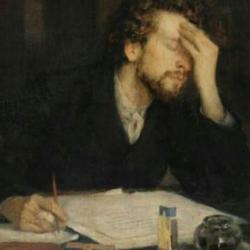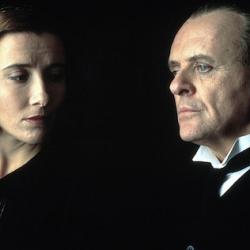In his book, The Reign of Chivalry , Richard Barber gives a very fine summary of the courtly love tradition and the romantic tradition that it produced. I reproduce here only some of the main points of his discussion of the lyric love poetry of the troubadours.
1) Courtly love, Barber argues, is the spell that “transmutes mere knighthood into chivalry.” He points to “four elements in the great medieval romances of chivalry”: heroism or prowess, which the courtly tradition inherits from the ancient world; the lyrics of love; marvels such as those found in the folktale; and the romance itself, which uniquely centers “on both the hero and heroine.”
2) After a summary of the Chason de Roland and El Cid, which he describes as “the two European epics which are most representative of the heroic poetry which a twelfth-century knight – or poet – would have known,” Barber turns to the impact of troubadour poetry on chivalric romance. Troubadour poetry comes mainly from the 12th to the 14th century, and takes form in “a rich, leisured society, which had time to develop a highly elaborate secular culture.” Unlike the straightforward chansons de geste that preceded it, the lyrical poetry of the courtly tradition is “poetry of astonishing sophistication.” One of the earliest poets, Guillaume IX of Aquitaine wrote “in a very polished style” in which he “parodies an already complex attitude toward love in some of his songs.” What sets these lyrics apart is the sense that “the centre, the pivot, and the lodestone of the troubadour’s world is the lady whom he loves.” Troubadour poetry focuses mainly on “the man’s desire for an often distant and unattainable mistress.”
Troubadour poetry reflects a “continual tension between the physical side of love, love shared and enjoyed, and the longing of an unfulfilled love.” Some praise consummated love as the only true love, while others enjoy the “exquisite pain-pleasure of a love which is either impossible to fulfill or is deliberately denied fulfillment.” Whatever direction the poetry goes, the man’s life is dominated by love, and his main object is to win his lady by gaining her favor. Thus, “from his love stem all virtues of this world – valour, courtesy, generosity – summed up in the one word pretz, worth. The man who does not love can never hope to be as accomplished as the lover whose desire spurs him on to new achievements.” As he summarizes the point later, “Courtly love has a strongly moral streak in it, a kind of secular morality replacing that of the Church: the lover must keep faith, he must strive towards the grail of his lady’s affections through prowess and self-improvement.”
3) Guillaume wrote both of physical and spiritual love, but later troubadours tended to side with spiritual love. Marcabru (writing in the mid-12th century) “distinguishes in his poems between Amars, mere carnal love, and fin’ amors, spiritual love. Amars, which he describes in the bluntest terms, is insatiable lust, which gives no satisfaction; fin’ amors offers not only enduring pleasure but is a way through which man may discover his own nobler nature.”
The social setting of troubadour poetry goes some way to explaining its shape. Marriage, Barber says, was “usually a matter of entirely unromantic feudal business.” If a woman married well, however, she “acquired a status and authority not unlike that of her lord, especially in the south, where Roman law, more favourable to women, was still current.” Spiritual love meets this social condition, in that “it is a kind of adulation, a tribute to grace and beauty in a world where physical love was chiefly concerned with the getting of heirs to estates.
Macabru, a man of humble perhaps illegitimate birth, develops a poetry that meets the situation. He cannot compete in the marriage market; but he can have a pure, spiritual love for a lady. He contrasts the virtuous path of fin’ amors to the vice of an advantageous marriage, severely condemning those who follow Amars. Macabru’s poetry proposes a new religion of sorts, contrasting to the orthodox Christianity of the time, even as he cites Paul and alludes to Augustine and the Apostle John for support.
4) Bernart de Ventadorn has been described as “the archetype of the courtly troubadour,” responsible for introducing the notion that the lover is “bound in service to his lady, just as the knight was bound in service to his lord.” This makes the “esoteric ideas” of the earlier troubadours instantly accessible to the average knight, who at least understands fealty. This is the form in which troubadour poetry enters into medieval romance, though sometimes there is the additional twist that the lady, like the liege lord, is the knight’s protector in tournament or battle.
5) In Germany, medieval love poetry was developed in a slightly different direction by the minnesanger, the “love-singers,” who flourished briefly in the 13th century. In comparison to the troubadours, these were “much more forthright in their attitudes to love, and while acknowledging the high ideals, are equally ready to mock those who carry them to excess.” German poets also often take the lady’s viewpoint. Yet, German poets like Ulrich von Lichtenstein were also capable of the same feudalized passion as the troubadours.
6) The perspective on love developed in medieval romance is often in tension with the lyrical tradition in courtly love. Tristan and Iseult first make an appearance in an Anglo-Norman poem of the mid-12th century. They drink a love potion, and their passion and betrayal all come from that episode. In this form, the story lacks the courtly convention that requires the knight to win the lady’s devotion through his prowess; Tristan winds Iseult’s love by magic. Their passion then dictates all they do, as moral considerations are overwhelmed. In his version, Gottfried of Strassbourg says that “Love is so blissful a thing, so blessed an endeavour, that apart form its teaching none attains worth or reputation,” but, Barber says, “the actions of his characters betray him; Tristan and Iseult betray Mark again and again.” Chretien’s version of Lancelot draws material from the Tristan story, but conforms Lancelot’s behavior more closely to the courtly ideal and to the realities of court life: “In broad terms, Lancelot’s greatest feats are performed in tournaments, while Gawain has more to do with the marvelous happenings of knight-errancy; Lancelot’s love, except for its consummation, is outwardly the harmless social amusement of love-service, while Tristan offers no such polite compliments to Iseult. Precisely because he represented an imaginable extension of real and everyday court life, Lancelot was to prove the most popular of the three heroes.”















